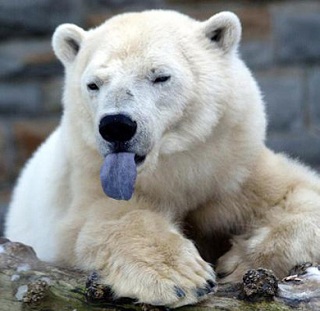Decline In Arctic Sea Ice Up To 95% Man-Made

The radical decline in sea ice around the Arctic is at least 70% due to human-induced climate change, according to a new study, and may even be up to 95% down to humans – rather higher than scientists had previously thought.
The loss of ice around the Arctic has adverse effects on wildlife and also opens up new northern sea routes and opportunities to drill for oil and gas under the newly accessible sea bed.
The reduction has been accelerating since the 1990s and many scientists believe the Arctic may become ice-free in the summers later this century, possibly as early as the late 2020s.
So begins the UK Guardian story on a new open access (!) study in in the journal Environmental Research Letters, “Sources of multi-decadal variability in Arctic sea ice extent.”
This study appears consistent with a recent Geophysical Research Letters paper, “Observations reveal external driver for Arctic sea-ice retreat” (see Study: ‘Virtually’ Certain Impact Of Manmade ‘Climate Change Is Observable In Arctic Sea Ice Already Today’).
Arctic ice loss has many harsh negative consequences for humanity and the local biodiversity. First, it eliminates a primary habitat for polar bears and other species. “The survival of polar bears as a species is difficult to envisage under conditions of zero summer sea-ice cover,” concludes the 2004 Arctic Climate Impact Assessment, by leading scientists from the eight Arctic nations, including the United States.
Second, a 2008 study led by David Lawrence of the National Center for Atmospheric Research (NCAR) concluded (see “Tundra 4: Permafrost loss linked to Arctic sea ice loss”):
We find that simulated western Arctic land warming trends during rapid sea ice loss are 3.5 times greater than secular 21st century climate-change trends. The accelerated warming signal penetrates up to 1500 km inland”¦.
In other words, if it continues, the recent trend in sea ice loss may triple overall Arctic warming, causing large emissions in carbon dioxide and methane from the tundra this century (for a review of recent literature, see “Nature: Climate Experts Warn Thawing Permafrost Could Cause 2.5 Times the Warming of Deforestation!”). Such accelerated warming would also presumably accelerate the melting of the Greenland ice sheet.
Third, its greatest near-term impact on humans may its effect on our own weather, as recent scientific studies suggest:
•Arctic Warming Favors Extreme, Prolonged Weather Events ‘Such As Drought, Flooding, Cold Spells And Heat Waves’
•Our Extreme Weather: Is Arctic Sea Ice Loss Partly to Blame?
•Must-See Video: Has Global Warming Caused A Quantum Jump In Extreme Weather?
So homo “sapiens” would be rather foolish to knowingly take steps that would lead to an ice free Arctic. Only brainless frogs would do that.
A good non-technical discussion on the new study can be found in the University of Reading’s news release, excerpted below:
Sea ice coverage at the North Pole has shrunk dramatically over the past 40 years. The ice is now more than a third smaller each September following the summer melt than it was in the 1970s. This affects wildlife, while potentially opening up new northern sea routes and controversial opportunities for oil and gas exploration.
Scientists at the University of Reading and the Japan Agency for Marine Earth Science and Technology (JAMSTEC) have found that some of the reduction in ice since 1979 – between 5% and 30% – may be linked to the Atlantic Multi-decadal Oscillation (AMO), a cycle of warming and cooling in the North Atlantic, which repeats every 65-80 years and has been in a warming phase since the mid 1970s.
Dr Jonny Day, University of Reading, said: “The debate over how much the change observed in Arctic sea ice can be attributed to humans and how much is due to natural variability in the climate is an important one. Our study shows that while natural changes play a significant role, the majority of sea ice loss – between 70% and 95% – is likely to be due to man-made greenhouse gas emissions….
By using advanced statistical techniques to compare satellite data obtained since 1979 with computer simulations run on some of the world’s most powerful supercomputers, researchers were able to provide a better estimate of the importance of natural climate variability on the reduction in sea ice, and how much could be attributed to human activity.
They found the natural cycles in winds over the Arctic (the Arctic Oscillation, or AO), which can cause ice to thin in some areas and pile up in others, had surprisingly little influence on the loss of sea ice. However the Atlantic Ocean’s AMO oscillation did have an impact.
The research, published online today in Environmental Research Letters, also looks back to 1953 when fewer observations are available. The natural warming/cooling cycles of the Atlantic Multi-decadal Oscillation (AMO) appear to have a much smaller influence on sea ice loss since 1953.
You can return to the main Market News page, or press the Back button on your browser.

